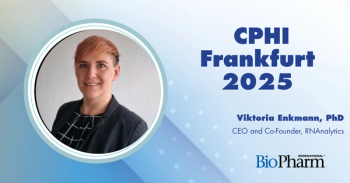
- BioPharm International-11-01-2017
- Volume 30
- Issue 11
Connectors and Sealing Mechanisms—and Their Impact on Process Protection
The use of external retainers to enhance the seal between connectors and tubing is an essential component in single-use manufacturing systems.
It is widely accepted that in biopharmaceutical manufacturing, single-use technology can be applied to most steps in a process. However, a single-use system is only as strong as its weakest link: in most cases that means the connections which enable the network of tubing to be transformed into a useable assembly. So which connections are the most effective-and is there a “one-size-fits-all” solution?
Connection Solutions Explored
Tie wraps. Tie wraps have many benefits. They are low cost and can work with all types of material, but they can create a non-uniform compression between the tubing and the hosebarb, and their application is manual as well as dependent on the operator.
Oetiker clamps. Oetiker clamps are slightly more expensive than tie wraps; however, as well as being usable with all types of material, they offer a 360-degree compression and an automated tensioning system that can be applied to a known force.
Oetiker clamps have been used for years on high-pressure hose applications in many industries, but their adoption had been slightly slower within the biopharmaceutical sector-possibly due to their stainless steel construction. However, Oetiker clamps are now rapidly becoming a connector of choice in biopharmaceutical manufacturing, due to their reliability and robustness.
BarbLocks. Like Oetiker clamps, BarbLocks offer a 360-degree compression and a repeatable automated connection force, while being compatible with all material types. However, they are more expensive, and their sizing is more limited than Oetiker clamps.
Overmolding. Overmolding gives the advantages of a single uniform internal flow path, which can overcome material compatibility issues and mitigate the risk of thermal and mechanical stress. While it can only join like-for-like materials, overmolding has the benefit of simplifying the validation process when a single material of construction is required.
No retainer. Having no retainer at all is of course the cheapest option, but it’s also the riskiest approach to take. This solution relies on the physical properties of the union between the hosebarb and the tubing alone, and provides the weakest of all connection options.
Putting Connectors to the Test
Parker, a provider of integrated bioprocessing solutions to speed up development times, increase efficiency and safety, and enable reproducible quality, conducted a study of the connection solutions-tie wraps, Oetiker clamps, BarbLocks, overmolding, and the “no retainer” option-at the company’s site in Birtley, UK.
Several small tubing assemblies, based on platinum cured silicone, were connected to one of the methods detailed above. Water pressure was then applied at room temperature until the point of catastrophic failure. The pressure required for catastrophic failure was measured.
Some retainers were deliberately positioned incorrectly away from the barb in order to observe if they stayed in position or became a point of failure.
Table I shows the results of the pressure points at which catastrophic failure occurred.
Additional Observations
On every occasion that a retainer was used, the tubing burst before the retainer that was in place.
Parker’s study also showed just how important it is to correctly position the retainer on the barb. Incorrect positioning of retainers, while not causing a point of failure, were able to move, which created cause for concern.
Conclusion
It is clear that the use of an external retainer is essential. Yes, connections can be made more effective by either increasing the size of the barb or decreasing the inside diameter of the tubing. However, this method is operator-dependent, is repetitive and difficult, and generates environmental, health, and safety concerns.
It is also important that any external retainer is positioned correctly, as incorrect positioning can impact process integrity by producing movement in the retainer. This risk can be eliminated by manufacturing controls and process checks.
If the overmolding method is employed, however, then the challenge of positioning the retainer correctly is overcome. As an automated process, overmolding eliminates any variation caused by manual application and the intervention of an operator.
About the Author
Graeme Proctor is product manager (single-use technologies) at Parker Hannifin, a diversified manufacturer of motion and control technologies and systems with annual sales of $11 billion in fiscal year 2016. The company provides precision-engineered solutions for a variety of mobile, industrial, and aerospace markets.
Articles in this issue
about 8 years ago
Connector Integrity in Single-Use Biomanufacturing Systemsabout 8 years ago
FDA Overhauls Inspection Process and Field Operationsabout 8 years ago
ADC Development Robust Despite Lackluster Performanceabout 8 years ago
Change Control for Standard Operating Proceduresabout 8 years ago
CDMO Acquisitions Build Strategic Supplier Baseabout 8 years ago
Pump Head for Shear-Sensitive Pumpingabout 8 years ago
Dip-Molded Plastisol Y Connectorsabout 8 years ago
Analytical Data System Updateabout 8 years ago
Temperature-Controlled Shipping Solutionabout 8 years ago
Evaluating Surface Cleanliness Using a Risk-Based ApproachNewsletter
Stay at the forefront of biopharmaceutical innovation—subscribe to BioPharm International for expert insights on drug development, manufacturing, compliance, and more.





